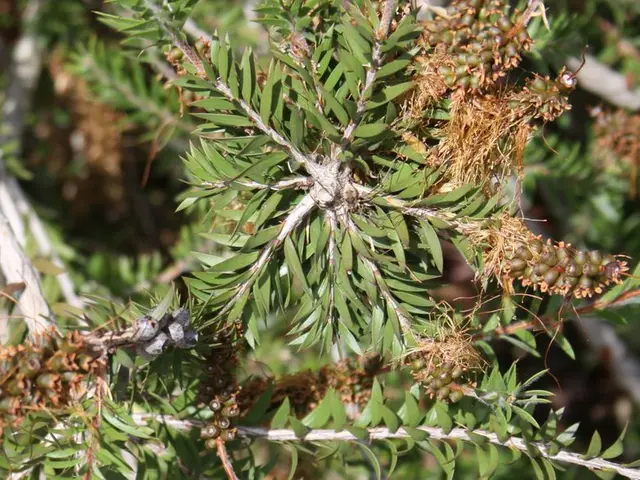Cultivating Marjoram: A Guide for Fragrant Leaves and Ornamental, Edible Blossoms
Marjoram, a popular aromatic herb known for its culinary uses and pollinator-friendly flowers, can thrive indoors with the right care and attention. Here's a step-by-step guide to cultivating a healthy, productive, and aromatic indoor marjoram garden.
Firstly, it's crucial to provide your marjoram with plenty of sunlight. Aim for at least six hours of direct sunlight daily. Place your pots on a sunny kitchen shelf or near a south-facing window to maximise exposure. If natural light is insufficient, supplement with fluorescent or LED grow lights to ensure the plant gets enough light to stay healthy and aromatic.
Secondly, use a well-draining potting mix. A recipe of equal parts soil and perlite is ideal to increase drainage and aeration, preventing soggy roots. Marjoram prefers slightly dry conditions, so avoid waterlogging. Clay or terracotta pots are recommended because they allow better air circulation and moisture evaporation.
Thirdly, let the top inch of soil dry out between watering to avoid root rot. Marjoram is drought-tolerant and doesn't like its roots to be constantly wet. Maintain consistent moisture without saturation – water when the soil feels dry to the touch but do not overwater.
Fourthly, use pots with drainage holes to prevent waterlogging. Choose pots 6 to 8 inches in diameter to provide enough room for root growth. Terracotta or clay pots are preferred for their breathable nature, which suits marjoram’s need for dryer root conditions.
Regular pruning encourages bushier growth and prevents legginess. Trim long stems and remove dead leaves every few weeks to promote new shoots and maintain a healthy, compact plant. Marjoram can be propagated easily from cuttings, ensuring a continuous supply in your indoor garden.
Consider creating a themed herb garden with marjoram. Grow it alongside other compact, shallow-rooted herbs in a mixed planter or kitchen shelf garden for a fresh herb supply. A "kitchen herb shelf" with marjoram, basil, parsley, and thyme is a convenient option. Incorporate marjoram near your cooking area, for example beside the kettle, so you can quickly snip fresh leaves for cooking or tea.
By combining these strategies, your indoor marjoram garden will be healthy, productive, and aromatic, providing fresh leaves and edible flowers year-round. Remember, marjoram is toxic to pets, so it's best kept out of reach of furry friends.
References: [1] The Spruce Eats. (n.d.). How to Grow Marjoram Indoors. Retrieved from https://www.thespruceeats.com/growing-marjoram-indoors-1468722 [2] The Old Farmer's Almanac. (n.d.). Marjoram. Retrieved from https://www.almanac.com/plant/marjoram [3] Gardening Know How. (n.d.). How to Grow Marjoram Indoors. Retrieved from https://www.gardeningknowhow.com/edible/herbs/marjoram/growing-marjoram-indoors.htm [4] The Balance. (n.d.). Growing Marjoram Indoors: How to Grow Marjoram in a Pot. Retrieved from https://www.thebalance.com/growing-marjoram-indoor-2898951
Incorporating marjoram into your home-and-garden lifestyle can yield a fresh, aromatic herb supply. Consider creating a themed home garden with marjoram, basil, parsley, and thyme, such as a kitchen herb shelf, for a convenient fresh herb supply close to your cooking area.
To keep your indoor marjoram garden thriving, use a well-draining potting mix, provide plenty of sunlight, and let the top inch of soil dry out between waterings. Regularly prune your marjoram and choose pots with drainage holes to prevent waterlogging.








